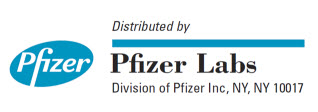FDA records indicate that there are no current recalls for this drug.
Are you a medical professional?
Trending Topics
Forteo Recall
Get an alert when a recall is issued.
Questions & Answers
Side Effects & Adverse Reactions
There is currently no warning information available for this product. We apologize for any inconvenience.
Legal Issues
There is currently no legal information available for this drug.
FDA Safety Alerts
There are currently no FDA safety alerts available for this drug.
Manufacturer Warnings
There is currently no manufacturer warning information available for this drug.
FDA Labeling Changes
There are currently no FDA labeling changes available for this drug.
Uses
SUTENT is indicated for the treatment of gastrointestinal stromal tumor after disease progression on or intolerance to imatinib mesylate.
SUTENT is indicated for the treatment of advanced renal cell carcinoma.
SUTENT is indicated for the treatment of progressive, well-differentiated pancreatic neuroendocrine tumors in patients with unresectable locally advanced or metastatic disease.
History
There is currently no drug history available for this drug.
Other Information
SUTENT, an oral multi-kinase inhibitor, is the malate salt of sunitinib. Sunitinib malate is described chemically as Butanedioic acid, hydroxy-, (2S)-, compound with N-[2-(diethylamino)ethyl]-5-[(Z)-(5-fluoro-1,2-dihydro-2-oxo-3H-indol-3-ylidine)methyl]-2,4-dimethyl-1H-pyrrole-3-carboxamide (1:1). The molecular formula is C22H27FN4O2 ∙ C4H6O5 and the molecular weight is 532.6 Daltons.
The chemical structure of sunitinib malate is:

Sunitinib malate is a yellow to orange powder with a pKa of 8.95. The solubility of sunitinib malate in aqueous media over the range pH 1.2 to pH 6.8 is in excess of 25 mg/mL. The log of the distribution coefficient (octanol/water) at pH 7 is 5.2.
SUTENT (sunitinib malate) capsules are supplied as printed hard shell capsules containing sunitinib malate equivalent to 12.5 mg, 25 mg, 37.5 mg or 50 mg of sunitinib together with mannitol, croscarmellose sodium, povidone (K-25) and magnesium stearate as inactive ingredients.
The orange gelatin capsule shells contain titanium dioxide, and red iron oxide. The caramel gelatin capsule shells contain titanium dioxide, red iron oxide, yellow iron oxide and black iron oxide. The yellow gelatin capsule shells contain titanium dioxide and yellow iron oxide. The white printing ink contains shellac, propylene glycol, sodium hydroxide, povidone and titanium dioxide. The black printing ink contains shellac, propylene glycol, potassium hydroxide and black iron oxide.
Sources
Forteo Manufacturers
-
Eli Lilly And Company
![Forteo (Teriparatide) Injection, Solution [Eli Lilly And Company]](/wp-content/themes/bootstrap/assets/img/loading2.gif)
Forteo | Pfizer Laboratories Div Pfizer Inc
![Forteo (Teriparatide) Injection, Solution [Eli Lilly And Company] Forteo (Teriparatide) Injection, Solution [Eli Lilly And Company]](/wp-content/themes/bootstrap/assets/img/loading2.gif)
2.1 Recommended Dose for GIST and RCCThe recommended dose of SUTENT for gastrointestinal stromal tumor (GIST) and advanced renal cell carcinoma (RCC) is one 50 mg oral dose taken once daily, on a schedule of 4 weeks on treatment followed by 2 weeks off (Schedule 4/2). SUTENT may be taken with or without food.
2.2 Recommended Dose for pNETThe recommended dose of SUTENT for pancreatic neuroendocrine tumors (pNET) is 37.5 mg taken orally once daily continuously without a scheduled off-treatment period. SUTENT may be taken with or without food.
2.3 Dose ModificationDose interruption and/or dose modification in 12.5 mg increments or decrements is recommended based on individual safety and tolerability. The maximum dose administered in the Phase 3 pNET study was 50 mg daily.
Strong CYP3A4 inhibitors such as ketoconazole may increase sunitinib plasma concentrations. Selection of an alternate concomitant medication with no or minimal enzyme inhibition potential is recommended. A dose reduction for SUTENT to a minimum of 37.5 mg (GIST and RCC) or 25 mg (pNET) daily should be considered if SUTENT must be co-administered with a strong CYP3A4 inhibitor [see Drug Interactions (7.1) and Clinical Pharmacology (12.3)].
CYP3A4 inducers such as rifampin may decrease sunitinib plasma concentrations. Selection of an alternate concomitant medication with no or minimal enzyme induction potential is recommended. A dose increase for SUTENT to a maximum of 87.5 mg (GIST and RCC) or 62.5 mg (pNET) daily should be considered if SUTENT must be co-administered with a CYP3A4 inducer. If dose is increased, the patient should be monitored carefully for toxicity [see Drug Interactions (7.2) and Clinical Pharmacology (12.3)].
Login To Your Free Account


